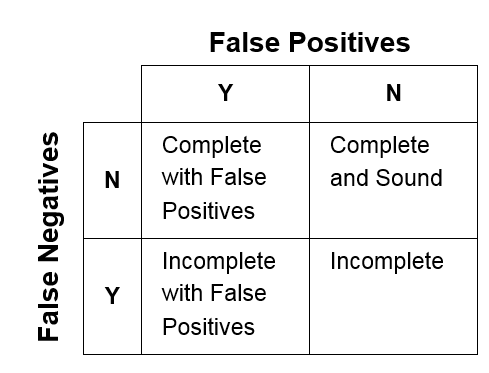
...
To the greatest extent feasible, an analyzer should be both complete and sound with respect to enforceable guidelines. An analyzer is considered sound with respect to a specific guideline if it cannot give a false-negative result, meaning it finds all violations of the guideline within the entire program. An analyzer is considered complete if it cannot issue false-positive results, or false alarms. The possibilities for a given guideline are outlined in the following figure.
Compilers and source code analysis tools are trusted processes, meaning that a degree of reliance is placed on the output of the tools. Accordingly, developers must ensure that this trust is not misplaced. Ideally, trust should be achieved by the tool supplier running appropriate validation tests such as the Secure Coding Validation Suite.
...
Although many guidelines list common exceptions, it is difficult if not impossible to develop a complete list of exceptions for each guideline. Consequently, it is important that source code complies with the intent of each guideline and that tools, to the greatest extent possible, minimize false positives that do not violate the intent of the guideline. The degree to which tools minimize false-positive diagnostics is a quality-of-implementation issue.
...
